Brutalismus – Künstliche Intelligenz – Wissenschaft
The Beauty and The Logic of Brutalism
Zur Zukunft der Wissenschaft anhand des Brutalismus
Dieser Text ist ein Experiment, zu dem Sie als Leser*in eingeladen sind. Einerseits geht es mit diesem Experiment um die Architekturform des Brutalismus oder New Brutalism, die auch mit den Fotos als visuelles Programm erforscht wird. Andererseits geht es um die Künstliche Intelligenz, in die Sie allein schon durch die Nutzung eines Computerspiels, eines Schreibprogrammes oder eines Smartphones mehr oder weniger stark verwickelt sind. Die Künstliche Intelligenz hat sich auch ihrer Fragen und Verhaltensweisen bemächtigt, was Sie wahlweise als angenehm oder bedrohlich empfinden können. Entziehen können Sie sich ihr nicht. Und dann geht es mit dem Experiment noch um „die“ Wissenschaft. Denn Wissenschaft wird u.a. aus Zitierregeln gemacht, die z. B. für akademische Haus- und Abschlussarbeiten verbindlich und zumindest je nach Fach hoch standardisiert sind.
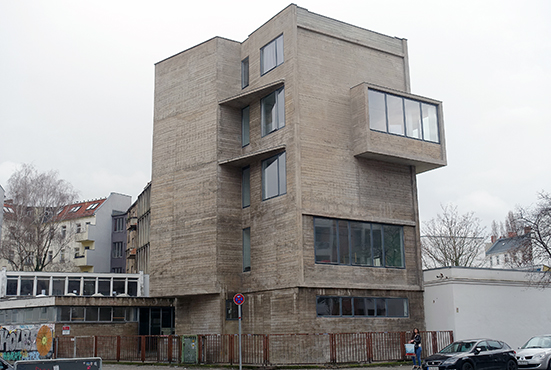
Brutalismus und Künstliche Intelligenz entwickeln sich auf verschiedenen Feldern seit den 1950er Jahren. Man kann sogar unter Hinweis auf den englischen Architekturkritiker, Schriftsteller und Theoretiker Reyner Banham und den englischen Mathematiker wie Informatiker Alan Turing sagen, dass beide 1950 bzw. 1955 entscheidende Begriffe wie Intelligence[1] und New Brutalism[2] prägten. Turing entwickelt 1950 den nach ihm benannten Turing-Test, bei dem es darum geht, herauszufinden, ob ein Computer als eine Maschine oder Künstliche Intelligenz das Denkvermögen eines Menschen erreicht hat. Ich werde auf den Turing-Test zurückkommen. Bei wissenschaftlichen Hausarbeiten wird der Turing-Test bislang nicht angewendet, weil Lehrende davon ausgehen, dass sie ein Mensch geschrieben hat. Doch Künstliche Intelligenz wurde bereits mehrfach eingesetzt, um z.B. in einer Doktorarbeit zu überprüfen, ob und wie stark plagiiert wurde. Jüngstes, umstrittenes Beispiel ist die Doktorarbeit der Familienministerin Franziska Giffey.
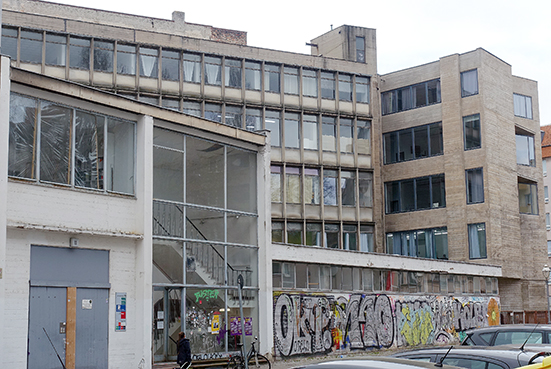
While it typically refers to concrete buildings inspired more or less directly by Le Corbusier, a fad called New Brutalism was heralded in Britain by a boxy, un-Corbusian school building of 1953 in the seaside town of Hunstanton, Norfolk.[3] The phrase “The New Brutalism” was immediately applied to it, though it had been designed in the spring of 1950, long before even the house in Soho, but the Brutalists themselves have accepted this appellation, and it has become the tag for Hunstanton wherever the building has been discussed.[4] Today, brutalism is flippantly used to disparage a period of outstanding municipal architecture in Britain in the 1960 – 80s, by disingenuously implying that is heartless and ugly.[5]
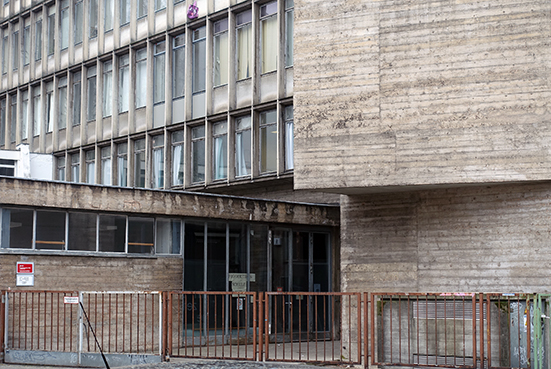
In 2014, the British critic Jonathan Meades produced a combative reconsideration of Brutalism in a two – part television documentary for the BBC, putting the style back into the mainstream of welfare-cutting Britain.[6] She barely mentions Prince Charles, though his 1988 BBC documentary, A Vision of Britain, along with the superbly illustrated book version published the following year, represented a frontal attack on postwar modernism, offering a traditional take on architecture and urbanism that resonated with the public.[7] Stanley Kubrick employed a system – built concrete housing development outside London, Thamesmead South, as an empty landscape of psychosis for A Clockwork Orange (1971), his cinematic version of Anthony Burgess’s novel about a violent gang of bowler-hatted thugs in a strange new Britain.[8]
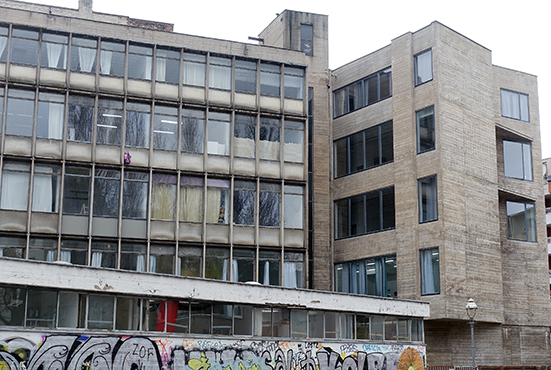
Elsewhere around London, the demolition of Euston Station and its magnificent gateway, Euston Arch, prompted an uproar similar to that caused by the destruction, also during the 1960s, of the original Pennsylvania Station in New York.[9] Harwood doesn’t mention the uproar, let alone the enduring unpopularity of the hopelessly banal new Euston Station that was completed in 1968.[10] In addition to the arch, its majestic Great Hall had a civic status akin to that of the old Penn Station’s general waiting room.[11] We’ve all seen Brutalist architecture, massively embodied by Boston City Hall, London’s Barbican Centre, UC Berkeley’s Wurster Hall, the University of Toronto’s Robarts Library, FBI Headquarters in Washington, D.C., or any other of the examples that have stood since the style’s 1960s and 70s heyday.[12]
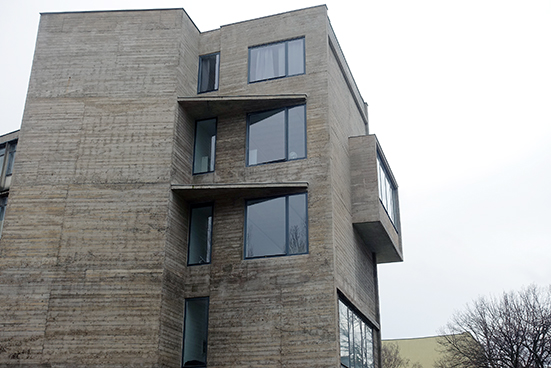
Tall buildings also require an elevated degree of social discipline, as well as security features like intercom systems, closed-circuit TV, and doormen or concierges.[13] Brutalist buildings are characterized by minimalist constructions that showcase the bare building materials, such as concrete and brick, and visible structural elements over decorative design.[14] Brutalism’s pathologically materialistic criteria for authenticity include the use of industrial materials and emphatic exposure not only of a building’s structural system but also of functional innards such as stairwells, elevator cores, ductwork, and so on.[15] She is intrigued not only by buildings that incorporate new materials but also by those that incorporate industrial processes of production, especially new prefabrication systems, or even the look of consumer products.[16]
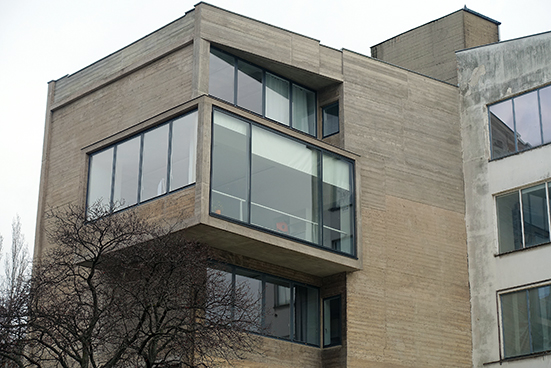
Tall buildings are highly artificial and complex structures housing temperamental machines, like elevators, that require a heightened degree of maintenance, often by highly paid technicians rather than handymen with toolboxes and stepladders, as Hanley observes.[17] Brutalism, it turns out, lends itself to Instagram–style scrolling, one eye–popping hunk of brush-hammered weirdness after another.[18] There are over 317,000 #brutalism posts on Instagram, where the designs ‚adherence to strong shapes and repetition enable dramatic shadows that make for striking images.[19] While it is very easy to think about the reproducibility of the brutalist building within Instagram and blogging, I think one also needs to think about the relational networks, cultures, and ecologies of images that are being reproduced by new connectivities online.[20] Chadwick first made his mark with his This Brutal House accounts on Twitter and Instagram, and a search on the latter for the hashtag #brutalismreveals the astonishing range and intensity of the style’s 21st-century fandom.[21]
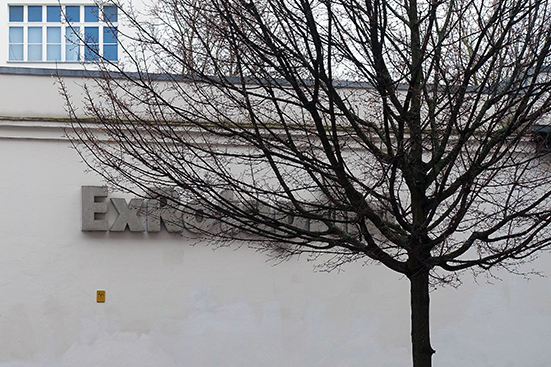
In fact it is the ruthless logic more than anything else which most hostile critics find distressing about Hunstanton – or perhaps it is the fact that this logic is worn on the sleeve.[22] The elitism argument resulted in easy critique as brutalism itself was created as housing for the masses, yet this critique is quickly shut down in a way that closely resembles the expelling of trolls.[23] Becoming part of the other side of the argument gives a breath of nuance every argument on the internet could use once in a while.[24] For an aesthetic once praised for its „ruthless logic“ and „bloody-mindedness“ — in the much-quoted phrasing of critic Reyner Banham — it is a surprising turn of events.[25]
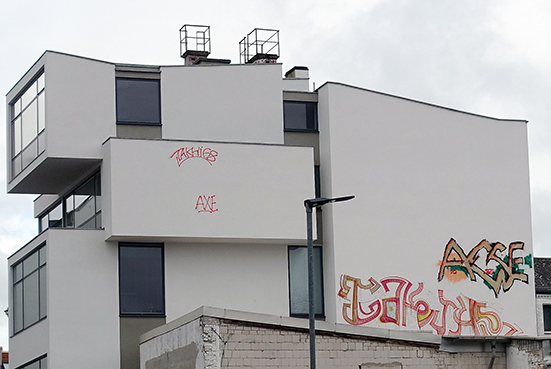
Located in one of the most bombed-out areas of London, rising from the ashes and debris of World War II, is this massive arts center and housing development, huge in scale and complexity.[26] The 70-acre Aylesbury Estate (1977) in the London borough of Southwark, one of the largest public-housing complexes in Europe, soon became a national byword for urban mayhem.[27] Meantime, large-scale redevelopment to accommodate offices, housing, and a shopping center at a historic south London crossroads, Elephant and Castle, was widely regarded as a failure, with the road-ringed shopping center a beached whale afflicted with poorly designed pedestrian access.[28] Consider Park Hill (1961), a huge council-housing estate containing nearly 1,000 duplexes and single-level flats that partially replaced a demolished slum overlooking downtown Sheffield — a crime-ridden precinct that, for all its problems, had housed a resilient community.[29]
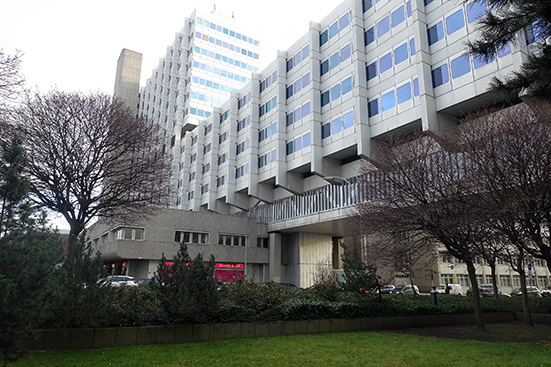
We live in an age of emotional web design; where we as interface and experience designers climb over each other to offer users empathy and understanding.[30] Brutalist web design — loosely defined as a functional and „raw“ visual aesthetic — is heavily influenced by graphic design, and abandons many trademarks of typical web design, like headers and footers, or traditional menu navigation.[31] The trend maximally uncovers the layout to express the trend : imagine an HTML page that has many blue hyperlinks and one color monospaced text.[32] If you want to experiment, we sure have few designers that will help you to create this vomit of a website, but me personally? In web design, playing with such pronounced shapes always leads to visually exciting results and is great for drawing attention to important UX elements such as CTA buttons.[33]
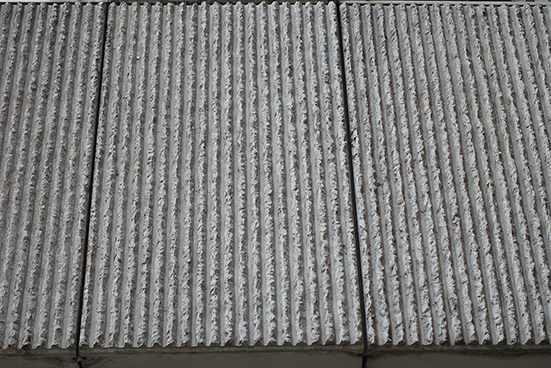
Within two decades, Le Corbusier had incorporated brise-soleil into five Unites across Europe and throughout his expansive government complex in Chandigarh, India, founded in 1953 and still perhaps the most ambitious Brutalist project on earth.[34] In 1947, Le Corbusier began what many consider the world’s first Brutalist building, the Unite d’Habitation housing project in Marseille, France. In India, Cambodia and Singapore, which won their sovereignty between 1947 and 1965, local designers adapted the rough concrete forms of internationally renowned architects like Le Corbusier and the American Brutalist icon Paul Rudolph to their own cultural and climatic contexts. The Khmer Rouge in 1975 style had a Place under governments that were encouraging the cultivation of private over … Rock garden acts as a room divider had a Place under governments that were encouraging cultivation.[35] The four corners of the arched concrete roof disappear into the palms, while glass walls on the front and back expose an entirely open-plan interior. A slender concrete roof arcs gracefully over the lawn — each of its four corners touching the ground — and disappears into thick fronds of tropical gardens like two ends of a rainbow.[36]
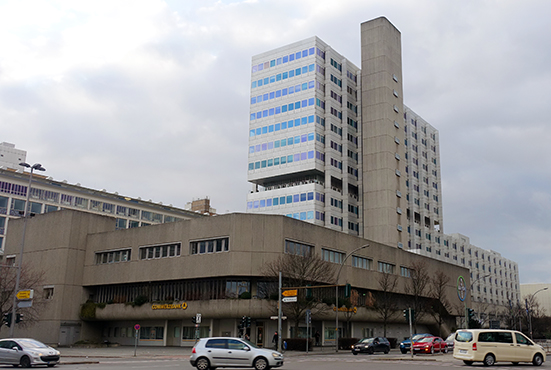
The 1972 house that the architect Marcos Acayaba designed for himself and his wife, the scholer Marlene Acayaba, in Cidade Jardim, a Sao Paulo neighborhood.[37] Despite the aesthetic’s dispersion around the globe, no place indigenized Brutalism more completely than Sao Paulo, which helps explain why Paulista architects like Mendes da Rocha object so strongly to the word. The beginning of the Paulista School was in houses, „says the scholar Marlene Acayaba, 70, whose 1987 book,“ Houses in Sao Paulo, 1947 – 1975, „remains the essential text on the subject. Sao Paulo wouldn’t develop its own distinctive modern architecture until 1948, when Joao Batista Vilanova Artigas founded the Faculty of Architecture and Urbanism at the University of Sao Paulo (FAU – USP), with a curriculum that focused on engineering.[38]
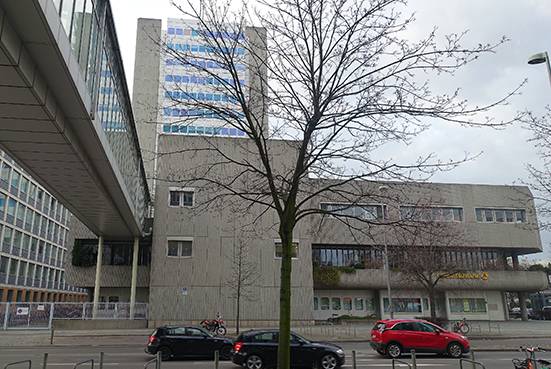
Is the formation of groups yet another example of the much-discussed (and disputed) echo chamber and filter bubble?[39] Unlike the filter bubble, the members of the Society for Nonpreservation consciously decide to position themselves on this side of the argument. Although these Facebook groups are not the best place to have a discussion, they are a valuable place to try to understand some of the different arguments that make up the discussion. Not involving myself in the argument itself, but rather in the way the conversation is held, I focus on the form rather than the content of the discussions.[40] These kinds of disapproving jokes is what the majority of the group’s content consists of, and let’s be honest, the reason for me to stay in the group and have a good laugh.[41]
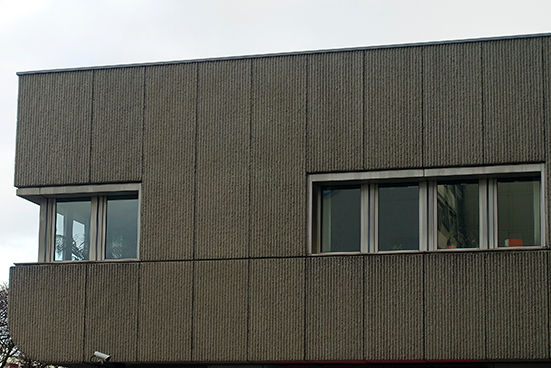
In redeveloping ex-council estates, nonprofits have used the sale of homes on the open market to help subsidize „social“ housing.[42] Harwood fails to give this reality due emphasis, which is odd, considering that of the three pillars of the postwar British welfare state — nationalized medical care, expanded educational opportunity, and council housing — only the last crumbled. This led to a much larger role for nonprofit housing corporations, to which many councils transferred some or all of their estates — a process actively encouraged by Tony Blair’s Labour government after his election in 1997.[43] Viable council-housing populations became harder to find in Britain as employment in factories and mines declined, a process that accelerated during the 1970s and 1980s.[44]
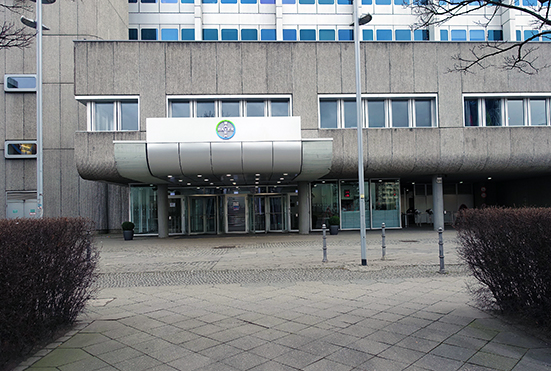
Sie haben bis hierhin einen wissenschaftlichen Essay über The Beauty and The Logic of Brutalism der Künstlichen Intelligenz AI-Writer gelesen. In das Formularfeld „What to write about? Headline, Topic …” wurde durch einen Tippfehler “The Beauty and The Logic of Bruatlism In Architecture” eingegeben. AI-Writer korrigierte „Bruatlism“ zu „Brutalism“. Dann wurde die Option “Research Focus” angekreuzt und der Button „Write article“ angeklickt. Das Essay wurde innerhalb weniger Minuten online recherchiert und die geordneten Zitate wurden nach Hashtag-Kombinationen absatzweise aufgelistet, um alternativ zugleich in einen Fließtext mit Fußnoten umgewandelt zu werden. Anders gesagt: Im Formular „Research & Ideas“ erscheint eine strukturierte Liste aus Zitaten. Wenn ich die Option „Research Focus“ nicht wähle, wird sogleich ein Fließtext mit Fußnoten angeboten. Sehr vielmehr Zeit kostete es mich, diesen weiter in das vorliegende Textformat unter einer Neuformatierung des Fußnotensystems mit den recherchierten Autoren und Titeln zu bringen.
„#Brutalism #building #Hunstanton #New #Britain
While it typically refers to concrete buildings inspired more or less directly by Le Corbusier, a fad called New Brutalism was heralded in Britain by a boxy, un – Corbusian school building of 1953 in the seaside town of Hunstanton, Norfolk. [5] …“
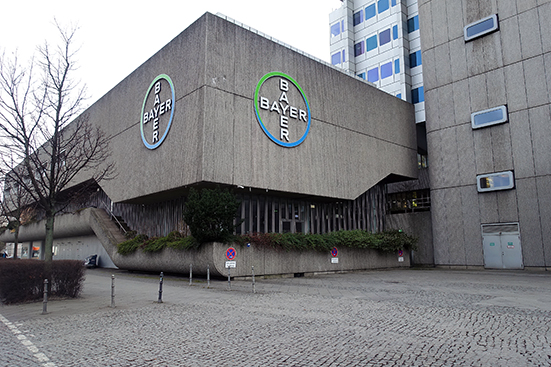
Die Hashtag-Kombinationen – „#Brutalism #building #Hunstanton #New #Britain“, „#Britain #documentary #BBC #novel #version“ und „#argument #logic #critics #critique #fact“ etc. –, die AI-Writer generiert hatte, wurden gelöscht und mehr oder weniger abweichende Keywords fett gesetzt. Benutzt wurde eine kostenlose Testversion von AI-Writer, auf die mich die Kollegin und Medienforscherin Claudia Reiche aufmerksam gemacht hat. Im Vergleich mit wissenschaftlichen Haus- und z.B. Bachelor-Arbeiten von Studierenden ist der Text der Artificial Intelligence (AI) mit sämtlichen Quellenangaben erstaunlich gut strukturiert. Alle Regeln für das wissenschaftliche Schreiben werden eingehalten. Im Unterschied zu vielen Schüler*innen und Student*innen werden die Regeln geradezu mustergültig befolgt. Anders, ironisch gesagt: Plagiieren lohnt sich nicht mehr, man kann gleich AI-Writer von Fabian Langer aus Zeitlarn bei Regensburg benutzen und in eine ansprechende Textform bringen.

Ich-Formulierungen wie „I think one also needs to think about the relational networks, cultures, and ecologies of images” oder „I focus on the form rather than the content“ oder „let’s be honest, the reason for me to stay in the group and have a good laugh“ können als einigermaßen verstörend aufgefasst werden. Denn hier stellt sich die Frage: Wer denkt? Wer fokussiert sich? Wer ist ehrlich und lacht? Ist die Künstliche Intelligenz ein Subjekt? Oder muss man das Ich als ein Zitat aus den Quelltexten lesen? Geht das überhaupt? In wissenschaftlichen Essays wird der Einsatz des Subjekts in der ersten Person Singular oder auch Plural („let’s be honest“) als Emphase der Subjektivität zu einer Geste der Authentifizierung. Es wird eine Art subjektives Wissen aufgeführt, das durch eine Künstliche Intelligenz, AI-Writer, aus dem Internet einen „unique text“ generiert wurde.
„1. Submit a headline
Choose a topic or headline and send it to our article-writing AI software
2. Wait a minute
Now wait while the best article writing software out there does its job
3. Save valuable time
Take what the automatic article writer drafted and make it into something perfect!„
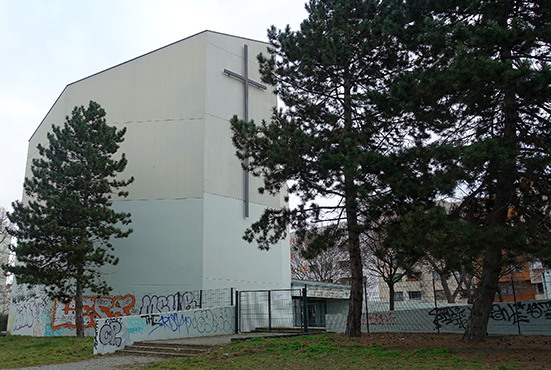
Lässt sich der Text The Beauty and The Logic of Brutalism noch als der einer Maschine identifizieren, wenn unter dem Namen beispielsweise einer/s Student*in mit bedeutender Geste das Ich gebraucht wird? Mensch oder Maschine? Erinnern Sie sich noch an die Diskussion über die Nutzung von Rechtschreibprogrammen in den 90er Jahren? Wer Hausarbeiten oft in größerer Zahl zu korrigieren hat, weiß, wie sehr sich die Korrektor*innen wünschen, dass doch wenigstens das Programm hinsichtlich der Interpunktion, insbesondere Kommata, beherrscht würde. Künstliche Intelligenz ist hinsichtlich Grammatikregeln und Regeln, die sich in einen Algorithmus verrechnen lassen, nicht so gut wie ein Mensch, sondern besser. Alan Turings Methode bestand darin, das Denken zu einer Frage der Berechnungen und Regeln zu machen:
“The idea behind digital computers may be explained by saying that these machines are intended to carry out any operations which could be done by a human computer. The human computer is supposed to be following fixed rules; he has no authority to deviate from them in any detail. We may suppose that these rules are supplied in a book, which is altered whenever he is put on to a new job. He has also an unlimited supply of paper on which he does his calculations. He may also do his multiplications and additions on a ‘desk machine’, but this is not important.”[45]

Die Maschine wird nicht nur und nicht erst bei Alan Turing zum Paradigma des Denkens nach Regeln wie der „human computer“. Vielmehr – und soweit „denkt“ die KI dann eben doch nicht – formuliert Le Corbusier 1923 in seiner Schrift, eine Art Manifest, Vers une architecture in der „Collection de „L’Esprit Noveau““ seine Regeln auf dem Weg zu einer Architektur.[46] Es lässt sich sagen: Er baute aus Regeln eine Architekturmaschine. Aus diesem Text zitiert Banham 32 Jahre später die Formulierung: „L’architecture, c’est, avec des matériaux bruts, établir des rapports émouvants.“ (Die Architektur baut mit Rohstoffen bewegende Beziehungen auf.) Le Corbusier nennt seinen Text „Argument“[47], was aus dem Kontext soviel wie These oder Streitschrift bedeuten kann. Gleich in der Einleitung wird der Architekt zum Ingenieur, indem Le Corbusier eine Ästhetik des Ingenieurs proklamiert: „Esthétique de l’Ingénieur, Architecture, deux choses solidaires, consécutives, l’une en plein épanouissement, l’autre en pénible régression.“ Ein Ingenieur konstruiert und bedient Maschinen. In Le Corbusiers Logik der Moderne oder des Neuen Geistes wird das Haus zur Maschine bzw. „machine à habiter“: „La mécanique porte en soi le facteur d’économie qui sélectionne. La maison est une machine à habiter.“[48]
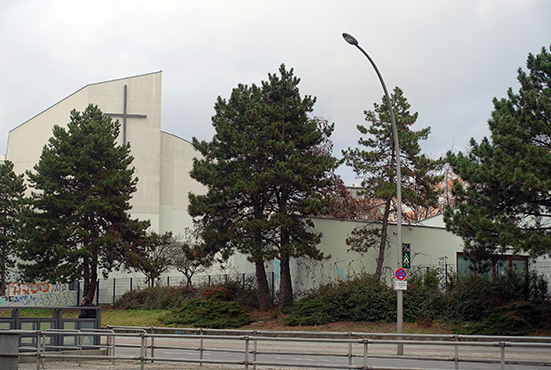
Le Corbusiers ebenso formalisierte wie poetische Schrift, sein „Argument“, macht die Architektur allein zu einer Aufgabe der Mathematik. Unser Denken, unser Geist – „notre esprit“ – wird mit ihm durch die Mathematik berechenbar, kalkulierbar, um durch sie befriedigt zu werden. Mit anderen Worten: Le Corbusier nimmt in der Architektur für das Denken voraus, was Alan Turing 1950 für eine „desk machine“ formulieren wird. Denken und Architektur werden zu einer Frage der Kalkulierbarkeit, mit der die Größe der Zahlen und Wohnmaschinen menschliches Denken übersteigen. Die Rohheit des Materials unterliegt paradoxer Weise einem mathematischen Modell vom Bauen und seiner Ökonomie. Das führt letztlich zu einer Veränderung des Verständnisses von Natur. Der „Béton brut“ als ästhetisches Element ist ebenso unbehandelt, natürlich, wird aber trotzdem vom mathematischen Denken oder Modell erfasst und ermöglicht.
„Opérant par le calcul, les ingénieurs practiquent les formes géométriques, satisfaisant nos yeux par la géométrie et notre esprit par la mathématique; leurs œuvres s’approchent du grand art.”[49] (Die Ingenieure üben nach Berechnungen geometrische Formen und befriedigen unsere Augen mit Geometrie und unseren Geist mit Mathematik. Ihre Werke nähern sich der großen Kunst.)
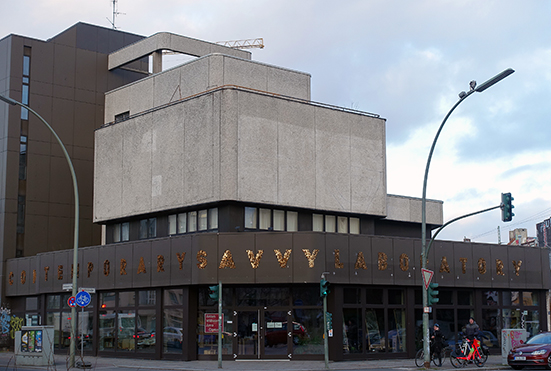
Die Materialität des Brutalismus funktioniert anders als die der Künstlichen Intelligenz. Einerseits wird die Materialität als Größe wie bei LeCorbusiers Wohnmaschinen ausgestellt ebenso wie die „beeindruckende“ Menge des Wissens durch die Zitate vorgeführt wird. Andererseits kehrt der Brutalismus seine Materialität nach außen, macht sie als künstliche sichtbar, während die KI beispielsweise mit dem „Ich“ seine Künstlichkeit versteckt. Doch die Verschiebung in der Wissensverarbeitung lässt sich offenbar lesen. Die große Regelhaftigkeit der maschinellen Verarbeitung von Wissen lässt den Text noch im Lesen schnell vorhersehbar und damit „uninteressant“ werden. Interesse wird durch eine gewisse Regelverletzung erregt, die Alain Turing nicht bedenkt, weil es ihm mit dem Imitation Game gerade um die Imitation eines Denkens nach Regeln beim Menschen geht.
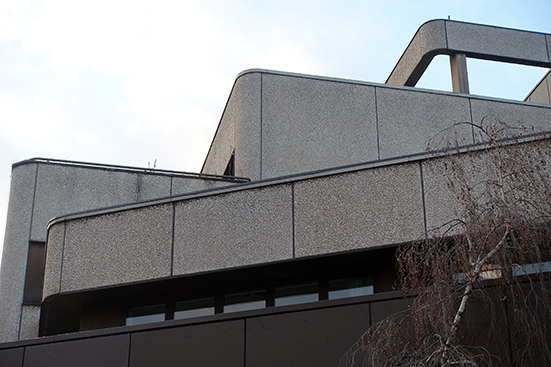
Der Brutalismus als Architekturform wird in vielen Städten vom Abriss oder dem Zerfall bedroht. Das ist ebenfalls ein Paradox, weil die berechnete Masse und Massivität doch vorspielte, gegen alle Zeitläufte kalkuliert zu sein. Brutalismus erinnert immer auch an Kriegsbunker und Hochsicherheitstrakte. In Berlin gibt es z.B. den „Mäusebunker“ der Charité, der unter Denkmalschutz gestellt wurde[50], und die „Wohnmaschine“ von 1957 im Westend[51], die ebenfalls 1996 unter Denkmalschutz gestellt wurde und renoviert worden ist. Die Schönheit oder gar Poesie des Brutalismus erschließen sich nicht nur durch die Mathematik oder die Rohstoffe, wie es Le Corbusier 1923 versprach. Eher schon entstehen sie durch Blickwinkel und Detailansichten. Die Frontalansicht bietet oft nur eine Geometrie, Flächigkeit und Größe, die abweisend oder gar hässlich wirken.
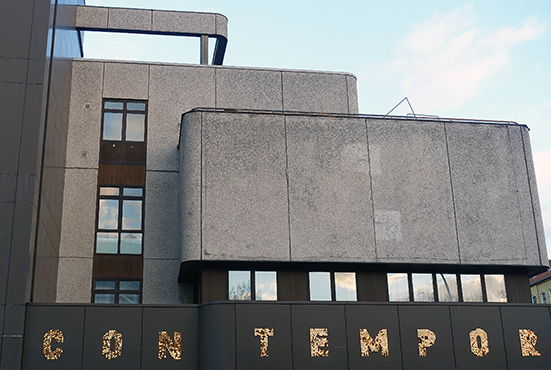
Auf und an der Reinickendorfer Straße im Wedding gibt es mit 4 Gebäuden eine Art Hotspot des Berliner Brutalismus. Der ExRotaprint-Turm von Klaus Kirsten von 1957 in der Gottsched- Ecke Bornemannstraße wurde vor dem Abriss gerettet und denkmalgerecht renoviert.[52] Die evangelische Dankeskirche von Fritz Bornemann auf dem Weddingplatz an der Reinickendorfer Straße wurde an die Syrisch-orthodoxe Kirche Antiochien verpachtet und in St. Izozoel umbenannt. Das Hauptgebäude von 1973 der Schering AG, die in die Bayer AG aufgegangen ist, wird laut Berlin Brutalism „vom Abriss bedroht“, zumal das Architekturbüro Kiemle, Kreidt und Partner keine größere Bekanntheit erlangte. Doch die Kombination aus rohem Beton und Aluminium spricht die Sprache des Brutalismus. In das spät-brutalistische Wohn- und Geschäftshaus an der Reinickendorfer Straße Ecke Gerichtstraße ist im letzten Sommer Savvy Contemporary unter der Leitung von Bonaventure Soh Bejeng Ndikung gezogen. Es ist noch wenig erforscht. Doch die regelrechte Verbunkerung zu den Straßenseiten mit den großen Sichtbeton-Flächen machen das Gebäude zu einem Exempel des Brutalismus.
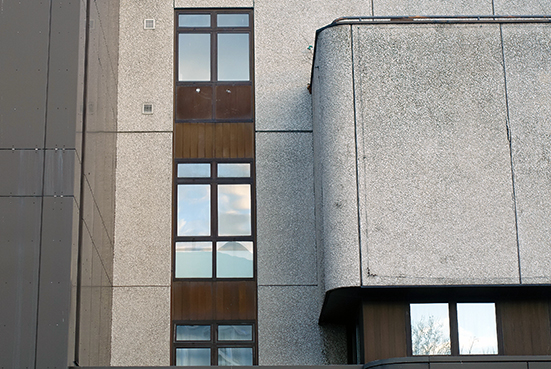
Torsten Flüh
[1] Alan Turing: COMPUTING MACHINERY AND INTELLIGENCE. In: Mind, Volume LIX, Issue 236, October 1950, Pages 433–460, Published: 01 October 1950 https://doi.org/10.1093/mind/LIX.236.433.
[2] Reyner Banham: The New Brutalism. In: The Architectural Review 9 December 1955. https://www.architectural-review.com/archive/the-new-brutalism-by-reyner-banham.
[3] Gatsby Leigh: A Plague on Cities, and the Poor. Brutalism’s enduring influence. In: City Journal Spring 2018. https://www.city-journal.org/html/plague-cities-and-poor-15838.html
[4] Reyner Banham: The … [wie Anm. 2].
[5] Dru Grange: Eco Brutalism with Trees. In: Dru Grange December 29. 2020 https://drugrange.com/c8u49h/eco-brutalism-brutalism-with-trees-d6e347
[6] Commentary (N.N.): Brutalism is Back. In: New York Times 07th October 2016 https://architexturez.net/pst/az-cf-180548-1475830285
[7] Gatsby Leigh: A Plague … [wie Anm. 3].
[8] Ebenda.
[9] Ebenda.
[10] Ebenda.
[11] Ebenda.
[12] Colin Marshall: Everything You Ever Wanted To Know About The Beauty Of Brutalist Architecture. In: Open Culture. Architecture, History April 2nd 2019. https://www.openculture.com/2019/04/everything-you-ever-wanted-to-know-about-the-beauty-of-brutalist-architecture.html
[13] Gatsby Leigh: A Plague … [wie Anm. 3].
[14] Reyner Banham: The New … [wie Anm. 2].
[15] Gatsby Leigh: A Plague … [wie Anm. 3].
[16] Ebenda
[17] Ebenda.
[18] Commentary (N.N.): Bruatalism … [wie Anm. 6].
[19] Allee Manning: Why Ugly Buildings Should Be Preserved. In: Garage Nov 21 2017, 3:59pm. https://garage.vice.com/en/article/xwa93j/why-brutalist-buildings-should-be-preserved
[20] Marjin Bril: Architectural Filter Bubbles: On the Society for the Nonpreservation of Brutalism. In: institute of network cultures October 27, 2020 at 4:59 pm. https://networkcultures.org/blog/2020/10/27/architectural-filter-bubbles-on-the-society-for-the-nonpreservation-of-brutalism/
[21] Colin Marshall: Everthing … [wie Anm. 12].
[22] Reyner Banham: The New … [wie Anm. 2].
[23] Marjin Bril: Architectural … [wie Anm. 20].
[24] Ebenda.
[25] Commentary (N.N.): Bruatalism … [wie Anm. 6].
[26] Brad Dunning: The 9 Brutalist Wonders of the Architecture World. In: GQ Style August 29, 2018. https://www.gq.com/story/9-brutalist-wonders-of-the-architecture-world
[27] Gatsby Leigh: A Plague … [wie Anm. 3].
[28] Ebenda.
[29] Ebenda.
[30] brutalist graphic design 2021 (N.N.) https://aselkutu.com.tr/307a7vpl/brutalist-graphic-design-48aa26
[31] Ebenda.
[32] Ebenda.
[33] Ebenda.
[34] Dru Grange: Eco … [wie Anm. 5].
[35] Ebenda.
[36] Ebenda.
[37] Ebenda.
[38] Ebenda.
[39] Marjin Bril: Architectural … [wie Anm. 20].
[40] Ebenda.
[41] Ebenda.
[42] Gatsby Leigh: A Plague … [wie Anm. 3].
[43] Ebenda.
[44] Ebenda.
[45] Alan Turing: Computing … [wie Anm. 1].
[46] Le Corbusier: Vers une architecture. Collection de „L’Esprit Nouveau“, Paris: Éditions Crès, 1923. (Fondation Le Corbusier)
[47] Ebenda.
[48] Ebenda.
[49] Ebenda.
[50] dpa/monopol: Hygiene-Institut der Charité jetzt unter Denkmalschutz. In: Monopol 21.01.2021.
[51] Berlin Brutalism: Le Corbusier Haus.
[52] ExRotaprint: Baudenkmal.

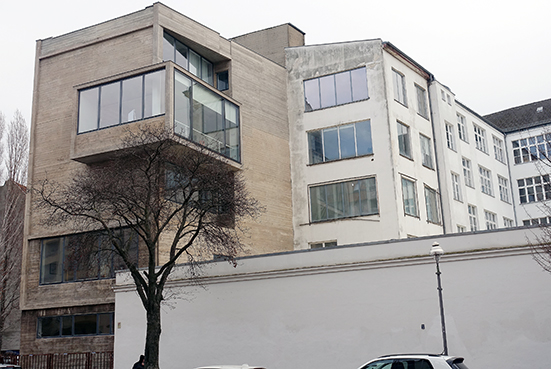
2 Kommentare